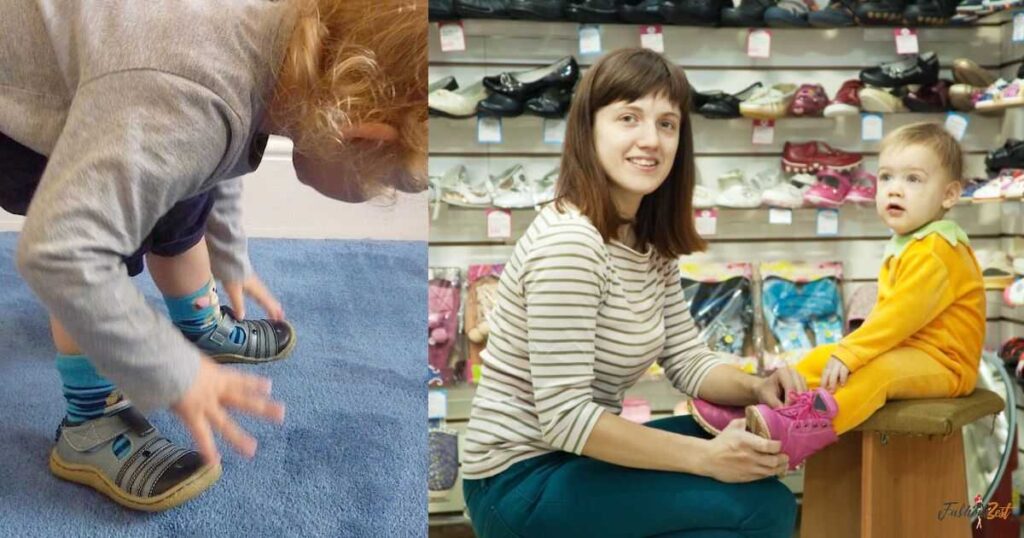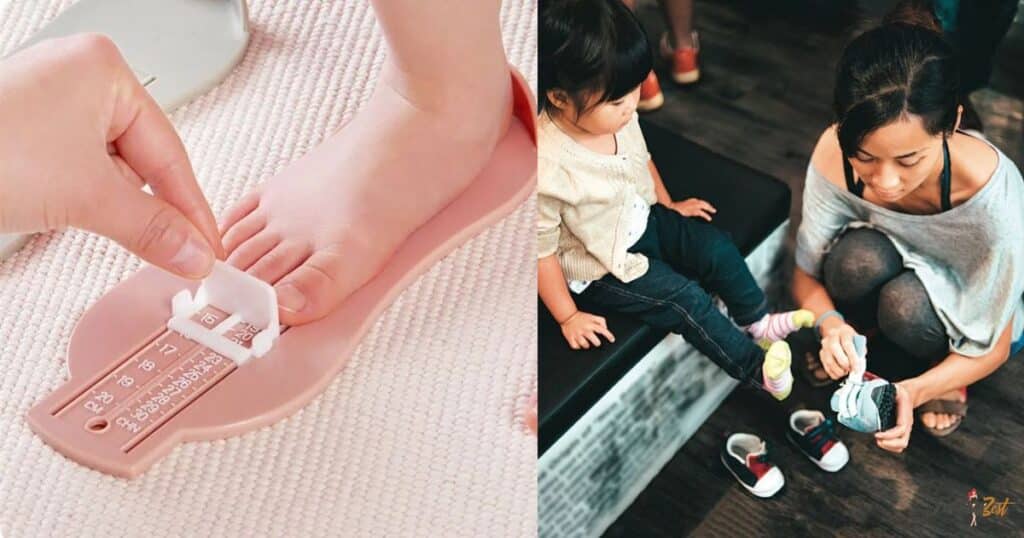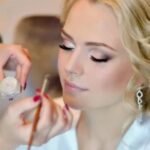When buying shoes for babies, measuring their feet accurately is crucial. It ensures comfort and proper development. Begin by placing the baby’s foot on a piece of paper. Gently press down to flatten the foot. Use a pencil to mark the longest toe and the heel. Measure the distance between these marks. Repeat the process for both feet as they may vary in size.
Take the larger measurement to determine the correct shoe size. Refer to a sizing chart specific to baby shoes for accurate sizing. Ensure there’s enough room for growth but not too much to cause discomfort. Always consider the width of the foot as well for a proper fit. Double-check measurements periodically as baby’s feet grow rapidly.
Step-by-Step Guide to Measuring a Baby’s Feet
1. Prepare: Gather a piece of paper, pencil and a soft measuring tape. These simple tools will aid in accurate measurements.
2. Position: Place the paper flat on the ground, ensuring a stable surface. Sit the baby in a comfortable position, preferably on your lap or a stable surface.
3. Flatten: Gently press the baby’s foot onto the paper, ensuring it’s flat. Hold the foot steady to avoid inaccurate measurements.
4. Mark: Use the pencil to make a small dot at the heel and the longest toe. Ensure the marks are clear but not too dark to avoid smudging.
5. Measure: Use the measuring tape to determine the distance between the marks. Be precise to get an accurate measurement for shoe sizing.
6. Repeat: Perform the same process for the other foot. Remember, feet may differ slightly in size.
7. Record: Note down the measurements for both feet. Keep track to ensure the correct shoe size is selected.
8. Reference: Use a reliable sizing chart specific to baby shoes to determine the appropriate size. Consider both length and width for a comfortable fit.
Click Play to Learn How to Buy Baby’s First Shoes
How to Choose Shoes for Pre-Walkers
Choosing shoes for pre-walkers is crucial for their comfort and development. Look for soft, flexible shoes that mimic barefoot walking. Avoid shoes with stiff soles or high ankles that restrict movement. Ensure a proper fit by measuring their feet regularly and allowing room for growth.
Popular Brands for Crawlers and Pre-Walkers
- Stride Rite
- Robeez
- Pediped
- See Kai Run
- Bobux
- Livie & Luca
- Umi Shoes
- Tsukihoshi
- Saucony
- Carter’s
- Clarks
- Freshly Picked
- Jack and Lily
- Geox
- Plae
How to measure baby feet for shoes at home

Measuring baby feet for shoes at home is simple and important for their comfort. Begin by placing a piece of paper on a flat surface. Gently press your baby’s foot onto the paper to make a clear outline. Use a ruler to measure the length from the heel to the longest toe.
Repeat the process for both feet as they may vary in size. Take the larger measurement to determine the correct shoe size. Refer to a sizing chart specific to baby shoes for accurate sizing. Allow a little extra room for growth, but not too much to avoid discomfort. By following these steps, you can ensure your baby’s shoes fit perfectly.
How to Choose Shoes for Walkers

Choosing shoes for walkers is crucial for their comfort and safety as they explore. Opt for lightweight shoes with flexible soles to support natural movement. Look for shoes with roomy toe boxes to accommodate growing feet. Ensure a snug fit around the heel to prevent slipping. Avoid shoes with stiff materials that may cause discomfort or restrict movement. Check the shoe’s flexibility by bending it gently with your hands.
Prioritize breathable materials to keep feet cool and dry during play. Measure both feet regularly, as sizes may vary between brands. Allow a thumb’s width of space between the longest toe and the shoe’s end. Look for shoes with adjustable closures for a customized fit. Consider shoes with non-slip soles to provide traction and stability on various surfaces. Finally, involve your child in the shoe selection process to ensure comfort and style.
How to Avoid Problems
To avoid problems, prioritize comfort and proper fit when choosing shoes for your child. Regularly measure their feet to ensure the correct size is selected. Look for shoes with flexible soles to support natural foot movement. Check for roomy toe boxes to accommodate growing feet without restriction. Ensure a snug fit around the heel to prevent slipping and discomfort. Choose breathable materials to keep feet cool and dry during activity.
Avoid shoes with stiff materials or high ankle support that may hinder movement. Involve your child in the shoe selection process to consider their preferences. Pay attention to any signs of discomfort or irritation while wearing the shoes. Replace worn out shoes promptly to prevent potential foot problems. By following these steps, you can help your child enjoy comfortable and healthy foot development.
When to See a Pediatrician
If you’re worried about your child’s feet, it’s essential to consult a pediatrician.
Signs indicating the need for a doctor’s visit include:
- Ingrown toenails
- In-toeing or out-toeing (feet turned inward or outward)
- Failure to walk by 15 months
- Toe walking
Read this blog: WHAT SHOES TO WEAR WITH PINK DRESS
A Word From Verywell
At Verywell, we’re committed to providing accurate and reliable health information. Our content is reviewed by medical experts to ensure credibility. We strive to make complex topics easy to understand for everyone. Your health and well-being are our top priorities. Whether you’re seeking advice or information, we’re here to help you.
Trust us to deliver up-to-date content backed by scientific research. We aim to empower you to make informed decisions about your health. Count on Verywell as your trusted source for health and wellness guidance. Together, we can navigate the journey to better health with confidence.
Frequently Asked Question
How often should I measure my baby’s feet for shoes?
It’s recommended to measure their feet every few months as they grow quickly.
What time of day is best to measure my baby’s feet?
Measure their feet in the afternoon or evening when they’re likely to be at their largest size.
Can I use a tape measure instead of a ruler to measure my baby’s feet?
Yes, you can use a soft tape measure for more accurate measurements.
How much extra space should I leave for growth in baby shoes?
Allow about a half-inch or a thumb’s width between the longest toe and the shoe’s end.
Should I measure both of my baby’s feet, even if they seem the same size?
Yes, it’s essential to measure both feet as they may vary slightly in size.
What should I do if my baby’s feet fall between two sizes on the sizing chart?
It’s best to choose the larger size to ensure a comfortable fit for growing feet.
Conclusion
In conclusion, measuring your baby’s feet for shoes is essential for their comfort and development. Using simple tools like paper and a ruler, you can ensure accurate measurements. Regularly check their foot size as they grow rapidly in the first few years. Refer to sizing charts specific to baby shoes for the most appropriate fit. Leave a little extra room for growth, but not too much to avoid discomfort. Remember to measure both feet, as they may differ slightly in size.
Prioritize flexibility and comfort when selecting shoes for your baby. It’s crucial to choose shoes that support natural movement and development. By following these steps, you can ensure your baby walks comfortably and confidently. Always consult a pediatrician if you have concerns about your baby’s foot development. Your attention to detail in measuring their feet will contribute to their overall well-being.

David a seasoned professional with 5 years of expertise in the fashion industry, brings creativity and passion to our website. Explore his rich background and insights in the dynamic world of fashion.







